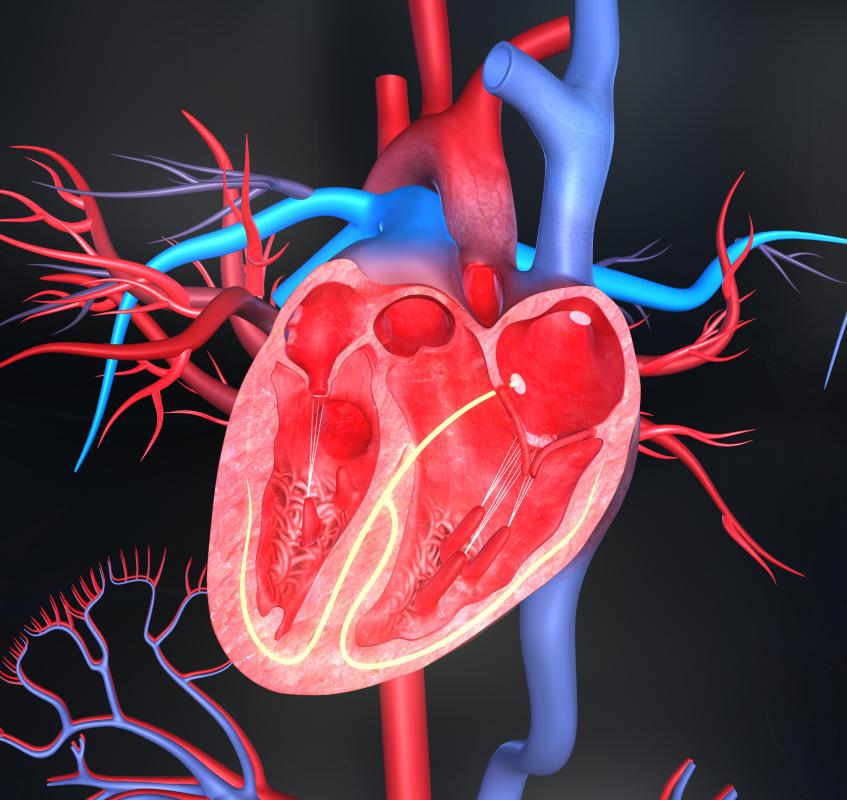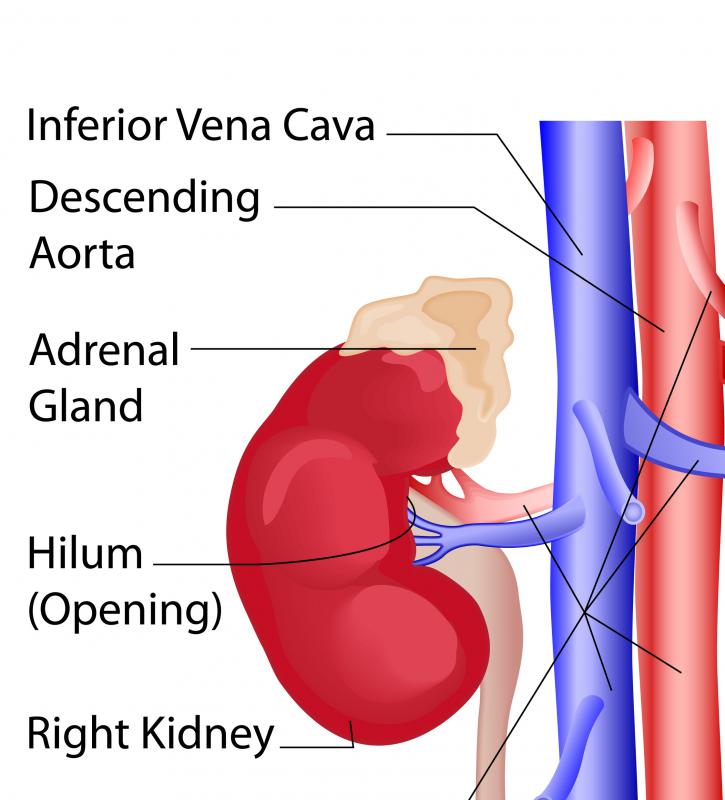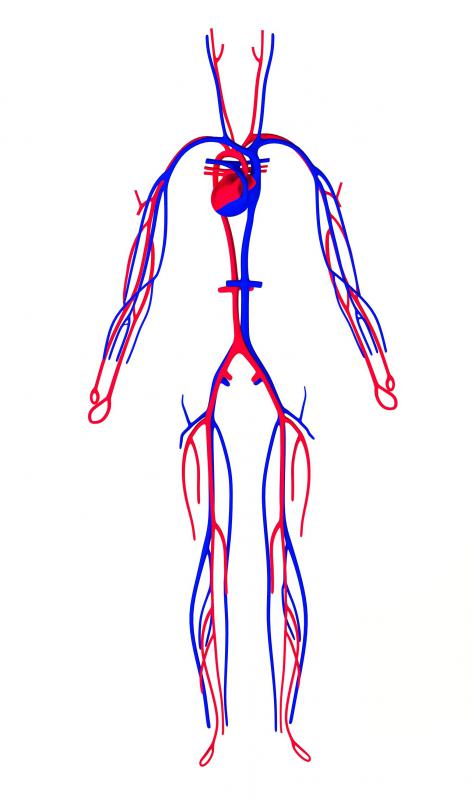At TheHealthBoard, we're committed to delivering accurate, trustworthy information. Our expert-authored content is rigorously fact-checked and sourced from credible authorities. Discover how we uphold the highest standards in providing you with reliable knowledge.
What Is the Function of the Vena Cava?
The venae cavae are two major veins found in all vertebrates that breathe air. Like all veins, the function of the vena cava is to transfer blood that has been deoxygenated from the body back into the heart. These veins are essential components of the circulatory system, and each one is responsible for returning the blood from half of the body. Blood from the upper half travels through the superior vena cava, while blood from the lower half runs through the inferior vena cava.
Other major veins feed into each vena cava, and reveal which portions of the body they are responsible for. The function of the vena cava can be seen from their tributary veins. The superior vena cava, located just above the heart, is formed from the junction of the left and right brachiocephalic veins. These veins return blood from the head, neck, and arms, as well as the upper spine and chest. Another vein, the azygos, collects blood from the chest wall and lungs, and empties into the superior vena cava, just above the heart.

The function of the vena cava that collects blood from the lower body determines its different structure. The inferior vena cava begins near the small of the back, where the iliac veins join. The iliac veins return blood which has been deoxygenated back from the legs. Many smaller tributaries feed into it as it runs near the backbone, crosses the diaphragm, and connects to the heart. These tributaries feed blood from the genitals, abdomen, kidneys, and liver.

Ultimately, the vena cava's function is to ensure the proper operation of the circulatory system. By returning blood that has been depleted of its oxygen to the heart's right atrium, the heart can then pump this blood to the lungs. In the lungs, the blood receives oxygen, which is vital for survival, and returns it to the heart. The heart can then pump the oxygenated blood throughout the body. These important veins help to return this blood for re-use after the body has utilized it.

To assist in the function of the vena cava, contractions from the heart time the delivery of blood and supply pressure. There are no valves that separate the venae cavae from the right atrium. Instead, contractions of the heart are relayed through other veins and muscles. These contractions provide pressure necessary to push deoxygenated blood to the heart. This process is crucial to ensuring continuous blood flow back to the heart.
AS FEATURED ON:
AS FEATURED ON:















Discussion Comments
@Kat919 - It's actually not usually the end of the world to lie on your back for a little while, even in late pregnancy. Yes, if you do it for a long time, or in some circumstances, it *can* interfere with inferior vena cava function, but you will feel that happening in plenty of time to get off your back.
I only bring this up because there are some exercises and stretches that expectant moms can do that help align their pelvis or get baby into a better position that require lying on your back for a few minutes. (I like the "Spinning Babies" website, but there are other sources out there.) I wouldn't want moms to be afraid to try them!
This article was interesting to read because I guess I thought the "function" of the (inferior) vena cava was to make pregnant women pass out if they laid on their backs!
You always hear so much about how you should not lay on your back after the twelfth week of pregnancy or so (you hear different numbers) because the weight of your uterus can compress your vena cava, which runs up your back, and cause you to feel faint or lightheaded.
Apparently it's best to lie on your left side for optimum blood flow, so I suppose the vena cava must be to the right of the spine? I tried very hard to stay off my back, but I just couldn't stay off my right side. It's my favorite sleeping side and I just couldn't get used to anything else!
Post your comments